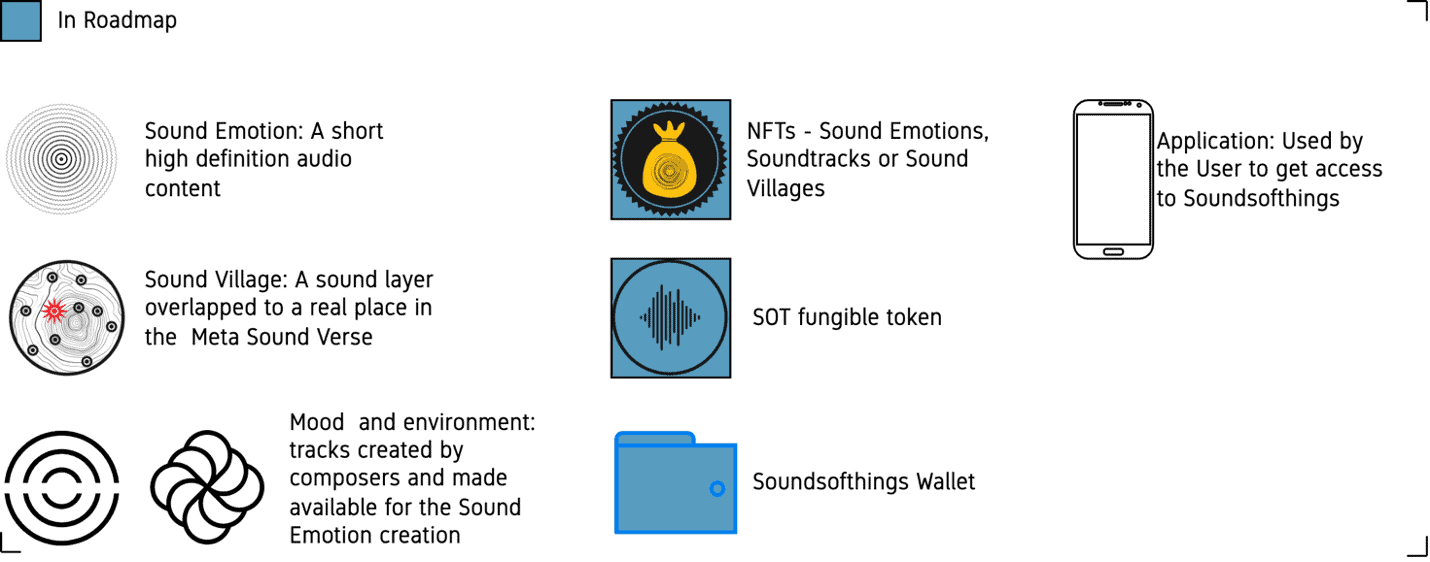7 Basic Elements of the SoundsofThings Ecosystem
SoundsOfThings is an elaborate ecosystem with many moving parts that work together seamlessly to give users an interesting experience. Seven components stand out the most as they are the ones that make the ecosystem accessible, unique, and valuable to the end-users.
1. The SOT application
This is an interface a user needs to access the ecosystem. It is an application on a smart device with a global positioning system (GPS). Through the app, users can easily record audio, mix it with a soundtrack for mood and environment, add an identifying image and upload it for others to consume.
It is also through the app that one consumes the content created by others and votes for it so that it can be minted into non-fungible tokens (NFTs).
The app has four critical portals that one needs to interact with the SoundsOfThings metaverse, especially in regard to the creation, sharing, and consumption of value. In the list are the composer portal, Sound Village Portal, Meta village portal, and the NFT marketplace.
2. Sound Emotion
This is the short immersive audio content that users produce and consume on the platform. It is usually a short audio recording mixed with a professionally produced soundtrack. The Sound Emotion is the primary content and asset of the SoundsOfThings ecosystem.
The Sound Emotion can be created to achieve various goals. For example, a Sound Emotion could be created to provide entertainment. Indeed the majority of Sound Emotions are likely to be for this purpose.
Some could be created with the capacity to provide sound therapy. Actually, SoundsOfThings could turn out to be the most suitable platform for sharing and monetizing sound therapy content.
The third type of Sound Emotions in the SoundsOfThings metaverse are those created by brands. Sound Emotions are apt tools businesses can use to grow their brand visibility, including sound logos.
The Sound Emotions that acquire significant user votes in the metaverse are minted into NFTs and then traded as assets with creative and sentimental value.
3. Mood and Environment
This aspect of the ecosystem involves creating and making available professionally composed soundtracks that users can add to their recordings to create the mood they want to express in a particular environment.
Anyone with music production skills can sign up and upload their artwork into the metaverse library. This library is accessible to all users in the ecosystem. Some soundtracks can be free to use, while others are purchased using the SOT token.
Indeed, the most used tracks can be minted into non-fungible tokens (NFTs) and traded in the metaverse marketplace.
4. Sound Village
This is a virtual environment superimposed on a physical place on a map. A sound village could cover a building, a street, or even an entire city. The Sound Village gives SoundsOfThings the metaverse characteristics.
Each Sound Emotion uploaded is pegged to a particular Sound Village. That means that one can only consume it if they are physically at the location of the Sound Village.
A sound village is a real estate bought and sold in the metaverse’s marketplace. It can also be rented to brands that need to use it for marketing their goods and services.
5. SOT Fungible token
This is a utility token on the blockchain designed to power the economy that the other elements of SoundsOfThings create. It is the store of value, the medium of exchange, and the unit of account in the SoundsOfThings metaverse.
Users earn it as a reward for tasks such as voting for Sound Emotions. They also use it to buy and rent the Sound Villages. It is also useful in the transactions involving the trading in NFTs in the ecosystem.
6. SOT Wallet
This is the wallet users keep their fungible and non-fungible assets. Whenever a user earns SOT tokens, they are sent into this wallet. It is also from this wallet that users make payments for any asset or service they procure in the metaverse.
The wallet is also used to manage assets, in particular, Sound Emotion NFT, Sound Village NFT, and Soundtrack NFT. This means the private keys that one exercises their ownership of an asset are stored in this wallet.
7. NFTs
The Sound Emotions, the soundtracks, and the sound villages can be minted into non-fungible tokens (NFTs) on the blockchain that can then be traded at a marketplace.
As an NFT, an asset becomes immutable, and only a single copy of it can exist in the metaverse. That adds a rarity characteristic to it, which in turn adds to its market value.
